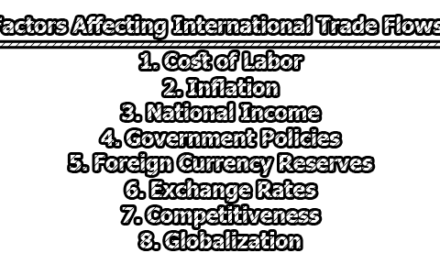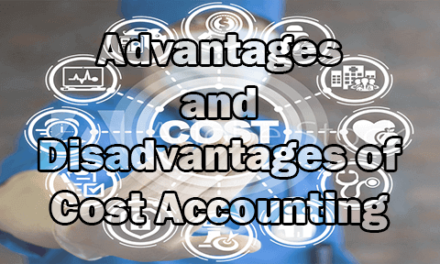How Corporate Strategy is Beneficial for a Business:
Corporate strategy is a crucial aspect of business management that involves making long-term plans to achieve specific goals and objectives. It provides a roadmap for the organization, guiding its actions and decisions to ensure sustainable growth and success. Here’s an exploration of how corporate strategy is beneficial for a business:
1. Goal Alignment: Corporate strategy plays a pivotal role in aligning the goals of an organization with its overarching mission and vision. The mission defines the fundamental purpose of the company, while the vision outlines the desired future state. Corporate strategy bridges the gap between the present and the future by laying out a roadmap for achieving specific objectives that are in harmony with the mission and vision.
This alignment ensures that every department, team, and individual within the organization is working towards common goals. It creates a sense of purpose and unity among employees, fostering a collaborative and focused work environment. When everyone is moving in the same direction, the collective efforts of the organization become more powerful, leading to increased efficiency and effectiveness.
Additionally, goal alignment through corporate strategy facilitates better communication and coordination across different levels of the organization. Employees understand how their individual roles contribute to the overall success of the company, which can enhance motivation and job satisfaction.
2. Resource Optimization: Efficient resource allocation is a critical aspect of corporate strategy. By conducting a thorough analysis of the organization’s resources, including human capital, financial assets, technology, and infrastructure, companies can identify areas where resources can be optimized for maximum impact.
Through strategic planning, businesses can prioritize investments in projects and initiatives that align with their long-term objectives. This process helps prevent resource wastage on activities that do not contribute significantly to the overall goals of the organization.
Resource optimization also involves identifying opportunities for cost savings and improving operational efficiency. This might include streamlining processes, adopting new technologies, or renegotiating contracts with suppliers. The result is a leaner and more agile organization that can adapt to changing market conditions.
3. Competitive Advantage: Corporate strategy involves a comprehensive analysis of the competitive landscape. This analysis helps businesses understand the strengths and weaknesses of competitors and identify opportunities and threats in the market.
Based on this understanding, organizations can formulate strategies to gain a competitive advantage. This might involve differentiating products or services to stand out in the market, pursuing a cost leadership strategy to offer products at lower prices, or focusing on a specific niche to cater to a specialized market segment.
A well-crafted corporate strategy not only helps in gaining a competitive advantage but also in sustaining it over the long term. Continuous monitoring of the competitive landscape allows organizations to adapt their strategies in response to changing market dynamics, technological advancements, and customer preferences, ensuring that they stay ahead of the competition.
4. Risk Management: Corporate strategy involves a thorough assessment of potential risks and uncertainties that the organization may encounter in its external environment. This proactive approach to risk management allows businesses to identify, analyze, and prioritize risks, ranging from economic downturns to changes in regulatory environments or technological disruptions.
With a clear understanding of potential risks, organizations can develop risk mitigation strategies. This may involve creating contingency plans, diversifying business operations, or implementing financial instruments to hedge against specific risks. By actively managing risks, businesses enhance their resilience and ability to navigate challenging situations.
Moreover, a focus on risk management in corporate strategy provides a foundation for strategic decision-making. It helps leaders make informed choices by considering the potential impact of decisions on the organization’s risk profile.
5. Innovation and Adaptation: Corporate strategy encourages a culture of innovation and adaptation. It recognizes the dynamic nature of business environments and the need for organizations to evolve continually. This includes embracing technological advancements, responding to changing consumer preferences, and staying ahead of industry trends.
Through strategic planning, businesses can allocate resources to research and development, fostering creativity and innovation. This might involve the introduction of new products, services, or business models that set the organization apart from competitors.
Furthermore, an adaptive corporate strategy allows organizations to pivot in response to unexpected challenges or market shifts. By regularly reviewing and updating strategies, businesses can ensure that they remain agile and responsive to emerging opportunities, ultimately increasing their chances of long-term success.
6. Long-Term Vision: One of the fundamental aspects of corporate strategy is the development of a long-term vision. This involves defining the organization’s aspirations and future state, providing a sense of direction for the entire enterprise.
A long-term vision serves as a guiding force for decision-making and resource allocation. It helps leaders prioritize initiatives that align with the overall strategic direction of the company, avoiding short-term thinking that may compromise long-term sustainability.
Communicating the long-term vision to employees and stakeholders creates a shared sense of purpose. This shared vision fosters commitment and dedication among the workforce, as individuals understand their role in contributing to the organization’s overarching goals. Additionally, a clear long-term vision can attract investors who share the company’s vision and are willing to support its growth over time.
7. Enhanced Decision-Making: Corporate strategy provides a framework for enhanced decision-making at all levels of the organization. When faced with choices, leaders can refer to the established strategy to ensure that decisions align with the overall objectives and direction of the company.
By having a clear roadmap, decision-makers can evaluate options based on their contribution to long-term goals, risk implications, and alignment with the organization’s core values. This helps in avoiding ad-hoc decisions that may be inconsistent with the strategic direction.
Moreover, the decision-making process becomes more transparent and accountable. Stakeholders can understand the rationale behind decisions, as they can be traced back to the overarching corporate strategy.
8. Organizational Alignment: Corporate strategy fosters alignment throughout the organization, ensuring that every department and team is working towards common goals. This alignment is crucial for synergy, as it helps integrate various functions and ensures that efforts are complementary rather than conflicting.
When there is organizational alignment, communication flows more smoothly, and collaboration becomes more effective. This, in turn, enhances overall organizational efficiency and effectiveness.
Additionally, organizational alignment promotes a shared corporate culture. Employees understand the values and objectives of the organization, leading to a sense of belonging and commitment. This alignment is particularly important as it minimizes the likelihood of internal conflicts and enhances the overall cohesion of the workforce.
9. Customer Focus: Corporate strategy often emphasizes a customer-centric approach. Understanding customer needs and preferences is essential for developing products and services that not only meet but exceed expectations.
By incorporating customer feedback into the strategic planning process, organizations can tailor their offerings to better align with market demands. This focus on customer satisfaction leads to increased loyalty, positive brand perception, and a competitive edge in the marketplace.
Furthermore, a customer-focused strategy involves ongoing efforts to stay attuned to changing customer preferences and evolving market trends. This adaptability ensures that the organization remains responsive to the dynamic needs of its target audience, fostering long-term relationships and sustained business success.
10. Financial Performance: Corporate strategy is directly linked to financial performance. The formulation and execution of an effective strategy contribute to the organization’s revenue growth, profitability, and overall financial health. By aligning business activities with strategic objectives, companies can make sound financial decisions that support long-term sustainability.
Strategic planning helps identify revenue streams, cost-saving opportunities, and areas for investment. It allows organizations to allocate resources efficiently, ensuring that financial resources are directed towards initiatives that align with strategic goals.
Additionally, a well-defined corporate strategy enhances the organization’s attractiveness to investors. Clear strategic goals, coupled with demonstrated progress towards achieving them, can instill confidence in shareholders and attract new investors, contributing to the overall financial stability of the business.
11. Adaptive to Change: The business environment is dynamic, and corporate strategy equips organizations to adapt to change effectively. Strategic planning involves continuous monitoring of the external environment, identifying emerging trends, technological advancements, and shifts in market dynamics.
An adaptive corporate strategy enables organizations to respond swiftly to changes, whether in customer preferences, regulatory landscapes, or competitive forces. This agility is crucial for maintaining a competitive edge and seizing opportunities as they arise.
Moreover, the ability to adapt to change is not only about reacting to external factors but also about fostering a culture of innovation and continuous improvement within the organization. This culture encourages employees to contribute ideas, embrace change, and stay ahead of industry developments.
12. Stakeholder Communication: Effective communication with stakeholders is facilitated by a clearly defined corporate strategy. This includes communication with employees, customers, investors, suppliers, and the broader community. A well-articulated strategy provides a framework for conveying the organization’s goals, plans, and progress.
Stakeholders, including employees, feel more engaged and connected when they understand the strategic direction of the company. Transparent communication about the organization’s priorities and performance fosters trust and confidence among stakeholders.
Furthermore, communicating the corporate strategy externally can positively impact the brand image. Customers and investors are more likely to support a company with a clear vision and strategic direction, as it demonstrates a commitment to long-term success and responsible management.
In conclusion, corporate strategy is a fundamental driver of success for businesses. It provides a structured framework for decision-making, fosters organizational alignment, and positions the company to navigate the complexities of the business environment effectively. By integrating strategic thinking into day-to-day operations, businesses can achieve sustainable growth and maintain a competitive edge in the market.

Library Lecturer at Nurul Amin Degree College










